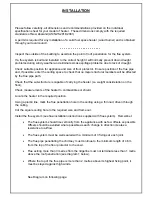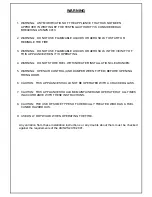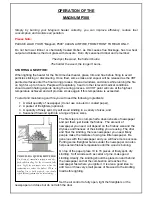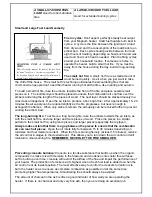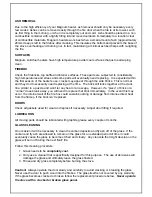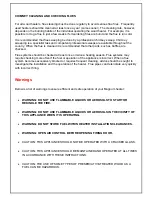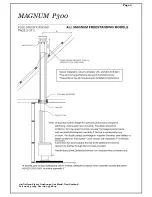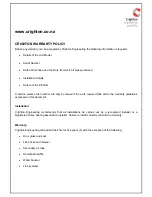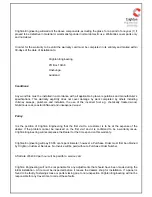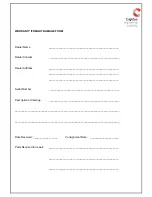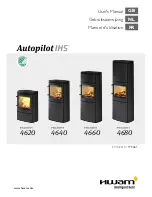
A SMALL-STACKED FUEL
LOAD Good for short-duration
fires
A LARGE-STACKED FUEL LOAD
Good for extended burning cycles
Small and Large Fuel Load Geometry
Fire in cycles:
Don't expect perfectly steady heat output
from your Magnum heater. Solid fuel heaters burn best in
cycles. A cycle is the time between the ignition of a load
from dry wood and the consumption of the load back to an
ember bed. Each cycle should provide between four and
eight hours of heating, depending on how much wood was
used and how much heat is needed. Plan the firing cycles
around your household routine. If someone is home to
operate the heater, build a small hot fire. If you must be
away from the house during the day, build a long-burning
fire.
The small, hot fire:
A small, hot fire is a small amount of
wood burned quickly. Use it when you just want to take
the chill off the house. The small hot fire technique eliminates the smouldering fires that are
common when people don’t need their heater running hot all the time, like in spring and autumn.
To build a small hot fire, rake the embers towards the front of the fire and place several small
pieces on it. The bottom layer should be placed to ensure that combustion air can flow over the
embers and along the length of the pieces of wood. The next layer should be stacked loosely in a
crisscross arrangement. Open the air inlet to produce a hot, bright fire. After approximately 15–20
minutes the air supply can be reduced slightly as the fire progresses, but never enough to
extinguish the flames. When only embers remain, the air supply can be reduced further to prevent
cooling the ember bed.
The long-burning fire:
To achieve a long burning fire, rake the embers towards the air inlets, as
with the small hot fire, and use larger and more pieces of wood. Place the pieces in a similar
pattern to the small hot fire, using more pieces and larger pieces (especially the top layer).
Always make certain that there is a gap between the pieces to ensure that the combustion
air can reach all pieces
. Open the air inlets fully for between 15 to 30 minutes depending on
load size and fuel moisture content. When the fire is burning fiercely (at least 15 minutes), reduce
the air control in stages to the desired level. This allows you to turn down the air control and still
maintain a clean-burning fire.
REMEMBER: NEVER LET THE FIRE SMOULDER.
Preventing creosote build-up:
Creosote is a tar-like substance that builds up when the organic
compounds in smoke mix with moisture in the firewood and condense onto cooler flue surfaces.
Left to build up over time, creosote will restrict the airflow of the flue and impair the performance of
your heater. The production of smoke is at its highest when a fresh fuel load is added or when the
air control is at its lowest position. The most effective way to control the creosote formation is to
burn the heater so as to ensure as complete combustion as possible and at the same time
promoting higher flue temperatures. Smouldering fires should always be avoided.
The amount of charcoal in the ash is often a good indicator of how well you are operating the
heater. If there is no charcoal and only very fine ash, then you are doing an excellent job.
LOADING FOR A SMALL HOT
FIRE
Rake the embers towards the front of the fire. Load
the wood loosely in a crisscross arrangement. Let
the fire burn brightly until most of the solid wood is
burned before reducing the air setting.



